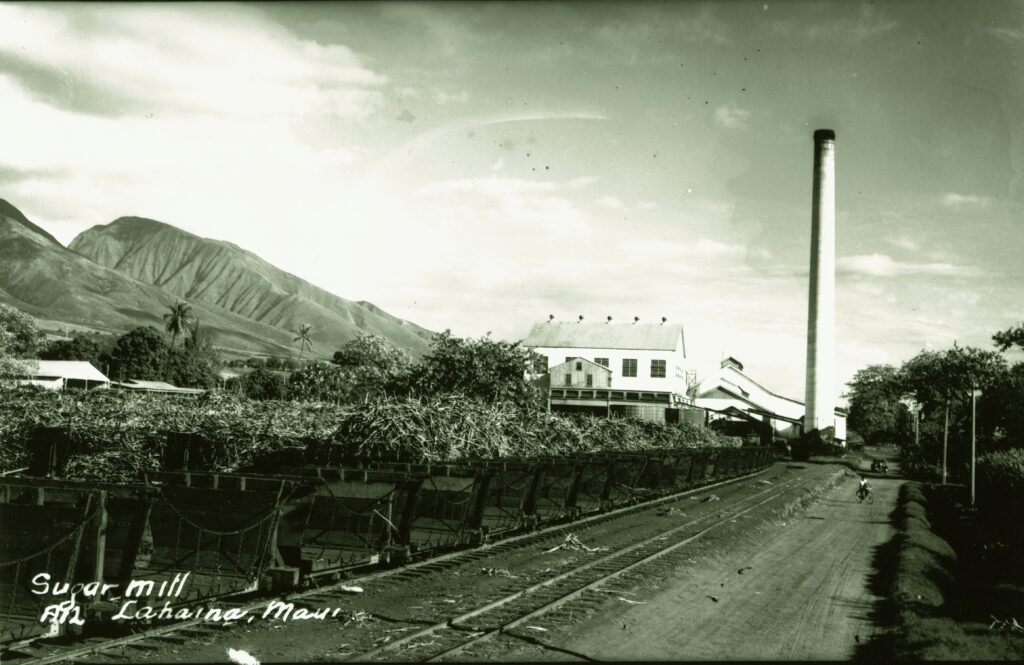A busy life … Teacher, Noble, Legislator, Newspaper Publisher, Italian Military Trainee, Surveyor, Revolutionist, Royalist, Counter-Revolutionist, Prisoner, Home Rule Candidate, Hawaiʻi’s First Congressional Delegate … he died October 23, 1903, at the age of 48.
He was born February 15, 1855 on the island of Maui. Hapa – his father was a native of Newport, Rhode Island; his mother, a native of Maui, a descendant of royalty.
He first went to school at Wailuku at the age of 8 years. When he was 10 years old his mother died, then his father moved to ranching at Makawao. There was no English school at Makawao until 1869.
That year, the Board of Education established the Haleakalā Boarding School; he was one of the first students at that school. Upon completion of his studies, he became a teacher at ʻUlupalakua.
In 1880, he was elected to the Islands’ legislature; he represented the citizens of Wailuku and its neighboring Maui community.
Nicknamed Ka Liona Hae O Ka Pakipika, or “The Roaring Lion of the Pacific,” Robert William Wilcox was a revolutionary soldier and politician – he was also referred to as the “Iron Duke of Hawaiʻi.”
King Kalākaua sent Wilcox to Italy to receive military training at the Royal Military of Turin, at the expense of the Hawaiian government.
In 1885, he graduated from the academy and was promoted to sub-lieutenant of the artillery; he then entered in the Italian Royal Application School for Engineer and Artillery Officers. (Several of the old photos of Wilcox show him in his Italian uniform.)
There, he married the first of his two wives, Signorina di Sobrero, an Italian.
Wilcox stayed in Italy until 1887; he returned to the Islands that year, because of the constitutional changes that had happened at that time (Bayonet Constitution.)
Later, he and his wife moved to San Francisco in 1888 and he worked as a surveyor for the Spring Valley Water Works Co. Wilcox came back to the Islands in 1889 and his wife returned to Italy.
On July 30, 1889, Wilcox led a rebellion to restore the rights of the monarchy, two years after the Bayonet Constitution of 1887 left King Kalākaua a mere figurehead.
By the evening, he became a prisoner and charged with high treason by the government. He was tried for treason, but was acquitted by the jury.
In 1890, he was elected to the Legislature in the Islands.
Following the overthrow of Queen Liliʻuokalani in 1893, the Committee of Safety established the Provisional Government of Hawaiʻi as a temporary government until annexation by the United States.
The Provisional Government convened a constitutional convention and established the Republic of Hawaiʻi on July 4, 1894. The Republic continued to govern the Islands.
From January 6 to January 9, 1895, in a “Counter-Revolution,” patriots of the Kingdom of Hawaiʻi and the forces that had overthrown the constitutional Hawaiian monarchy were engaged in a war that consisted of battles on the island of Oʻahu.
It has also been called the Second Wilcox Rebellion of 1895, the Revolution of 1895, the Hawaiian Counter-revolution of 1895, the 1895 Uprising in Hawaiʻi, the Hawaiian Civil War, the 1895 Uprising Against the Provisional Government or the Uprising of 1895.
In their attempt to return Queen Liliʻuokalani to the throne, it was the last major military operation by royalists who opposed the overthrow of the Kingdom of Hawaiʻi. The goal of the rebellion failed.
Wilcox was court-martialed and sentenced to death, but the sentence was commuted to thirty-five years. While in prison in 1895, Pope Leo XIII granted an annulment of their marriage. The Italian Consul and the Catholic Bishop at Honolulu confirmed this action.
In January, 1896, he was given a conditional pardon and became a free man; later that year, Wilcox married again, this time to Mrs. Theresa Cartwright. In 1898, President Dole gave him a full pardon.
With the establishment of Territorial status in the Islands, Hawaiʻi was eligible to have a non-voting delegate in the US House of Representatives.
Wilcox and others formed the Independent “Home Rule” Party and Wilcox ran as a candidate for the Delegate position (against Republican Samuel Parker and Democrat Prince David Kawānanakoa.) Wilcox won, and served as the first delegate and representative of Hawaiʻi in the US Congress.
He ran for re-election, but lost to Republican Prince Jonah Kūhiō Kalanianaʻole Piʻikoi (Prince Kūhiō served from 1903 until his death in 1922.)
Wilcox returned to Washington to finish out his term (November 6, 1900 to March 3, 1903,) but was very ill. He came back to Hawaiʻi in 1903, and died October 26, 1903. He is buried in the Catholic cemetery on King Street.


















































